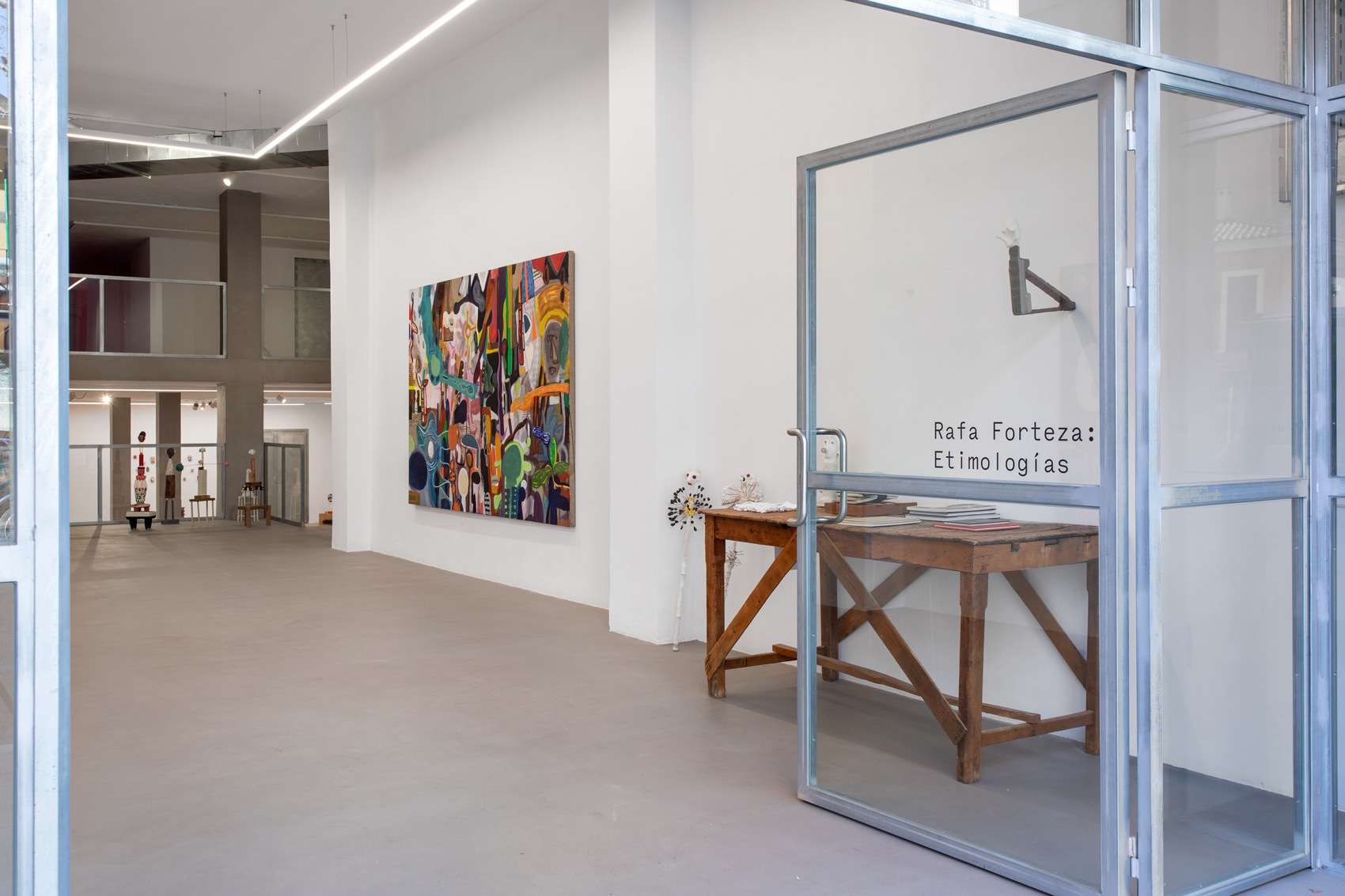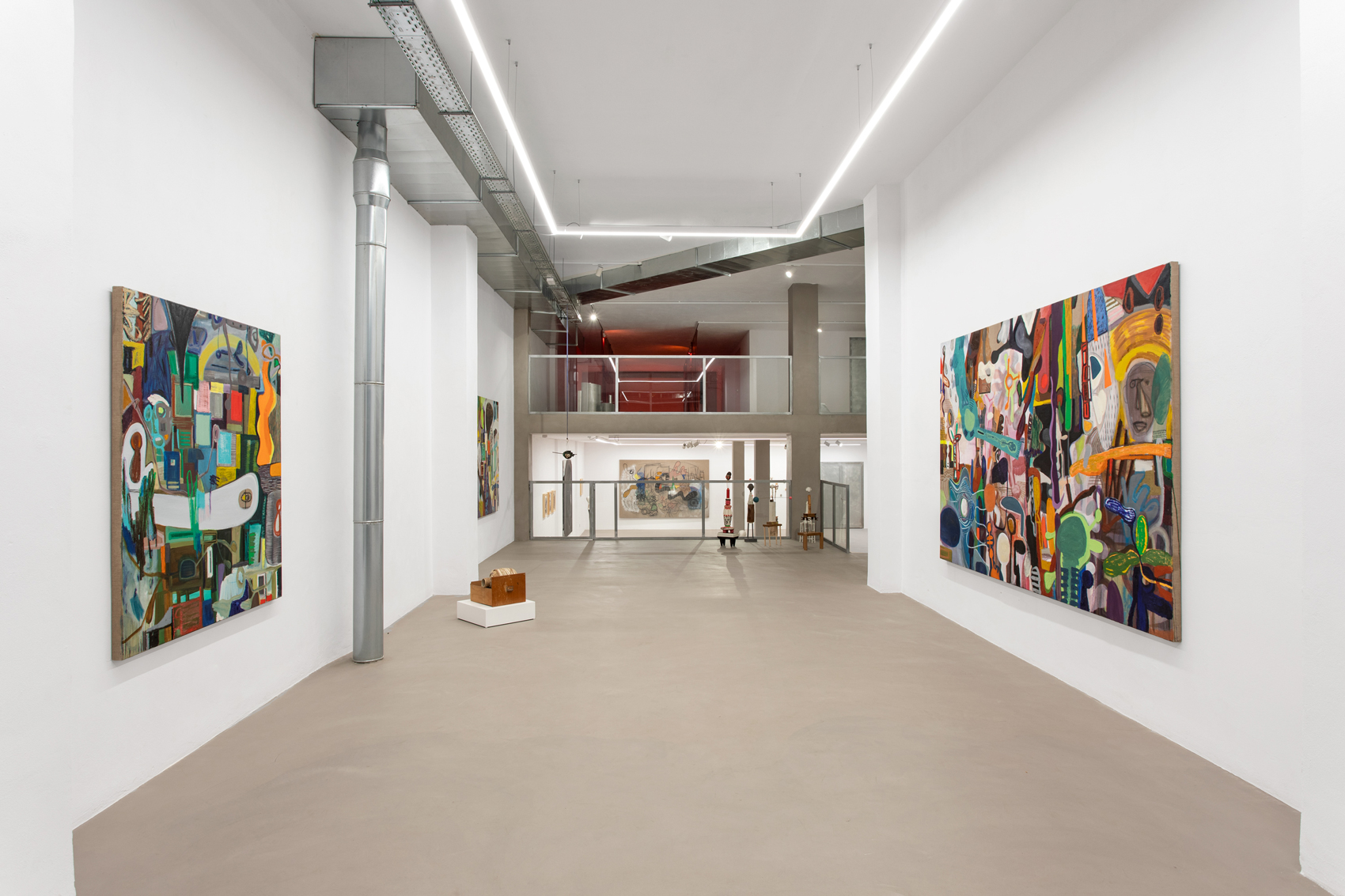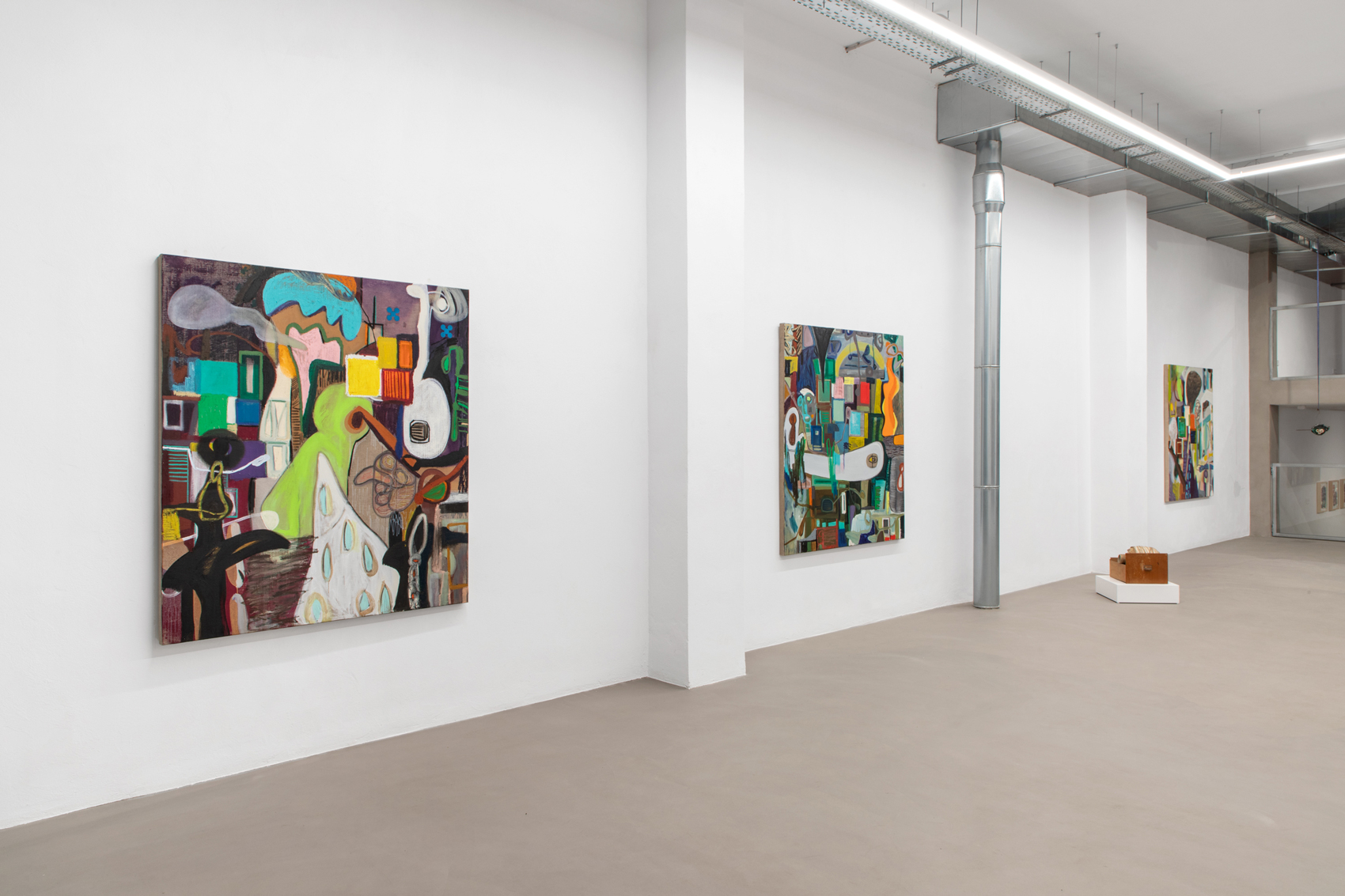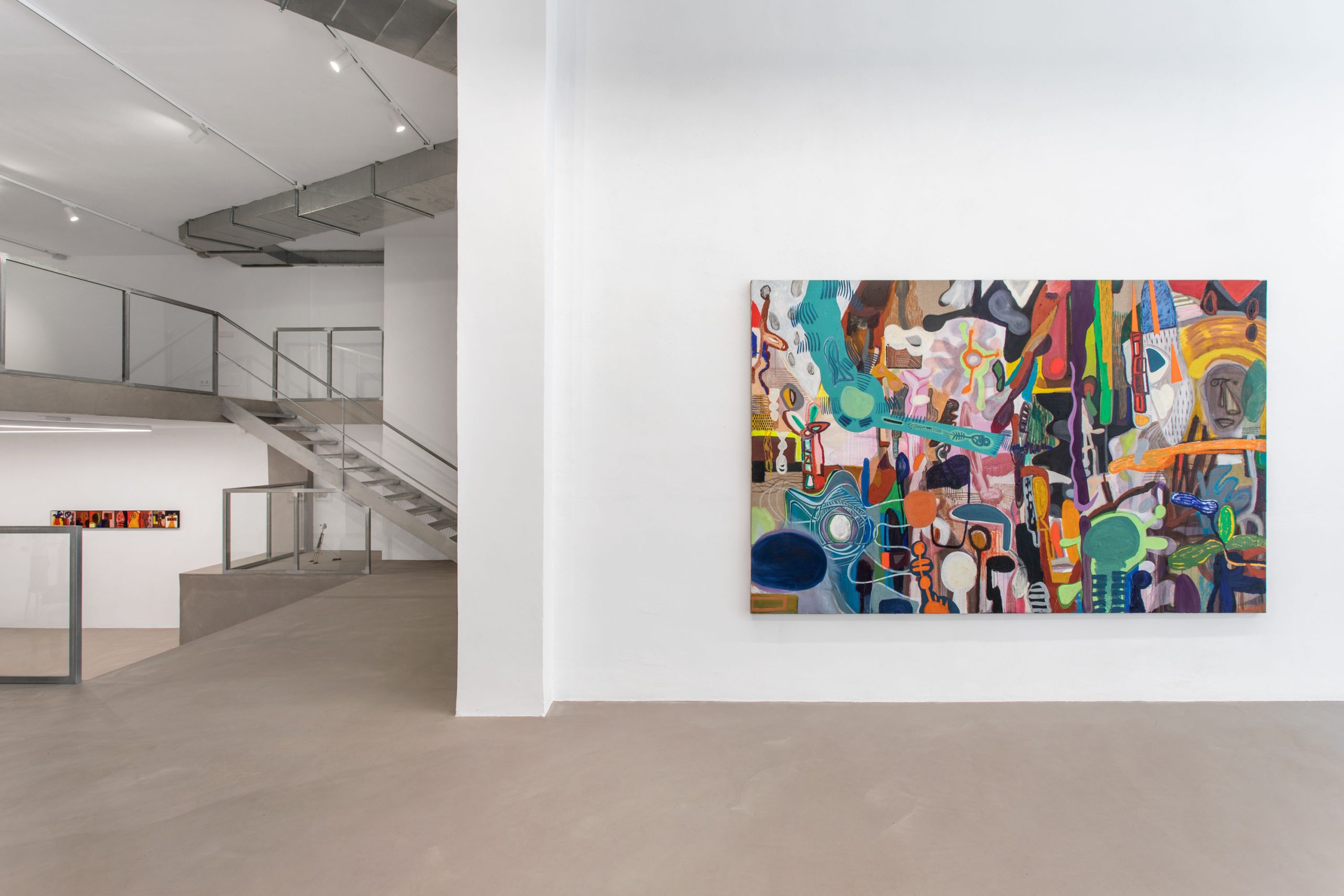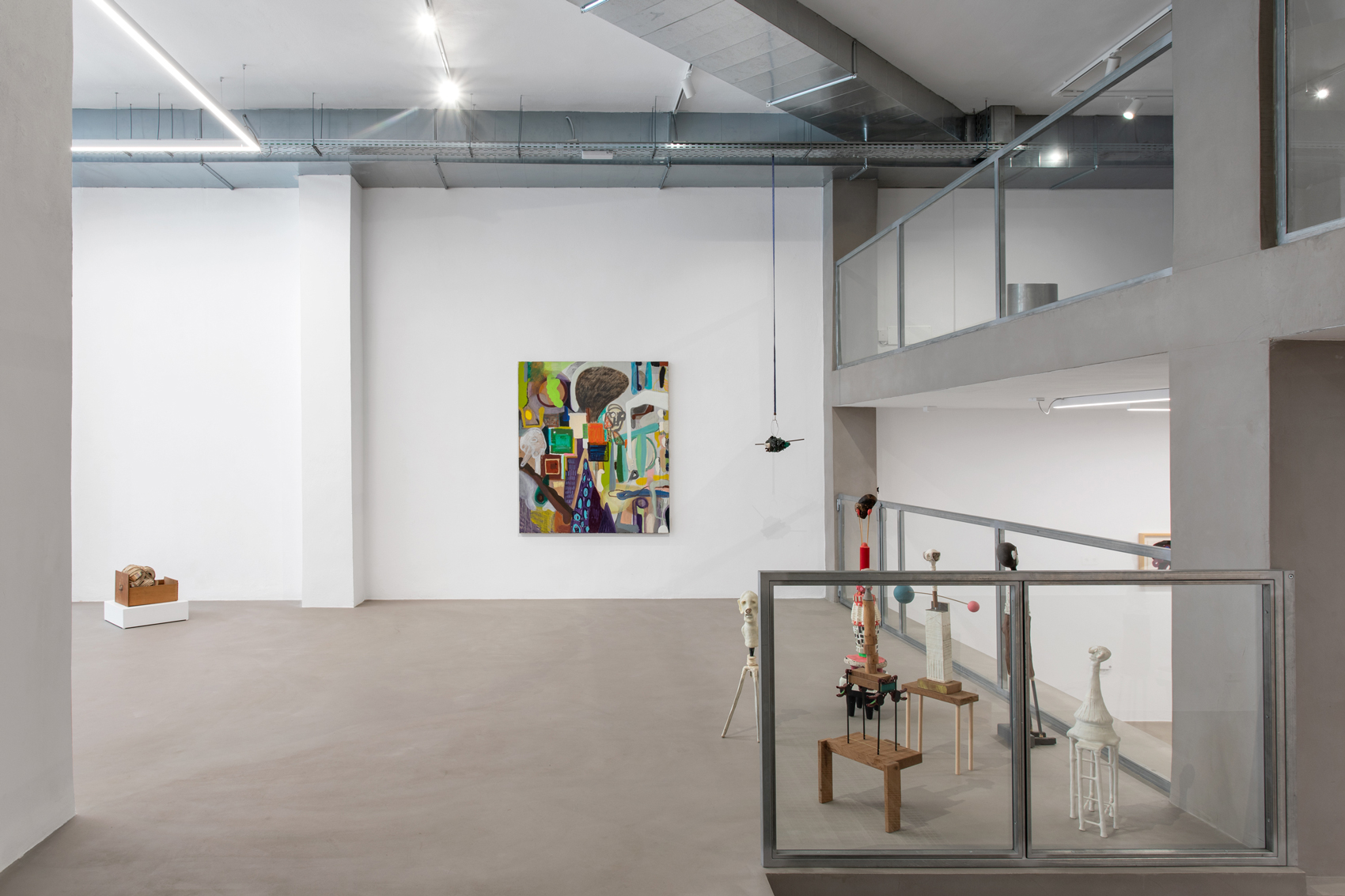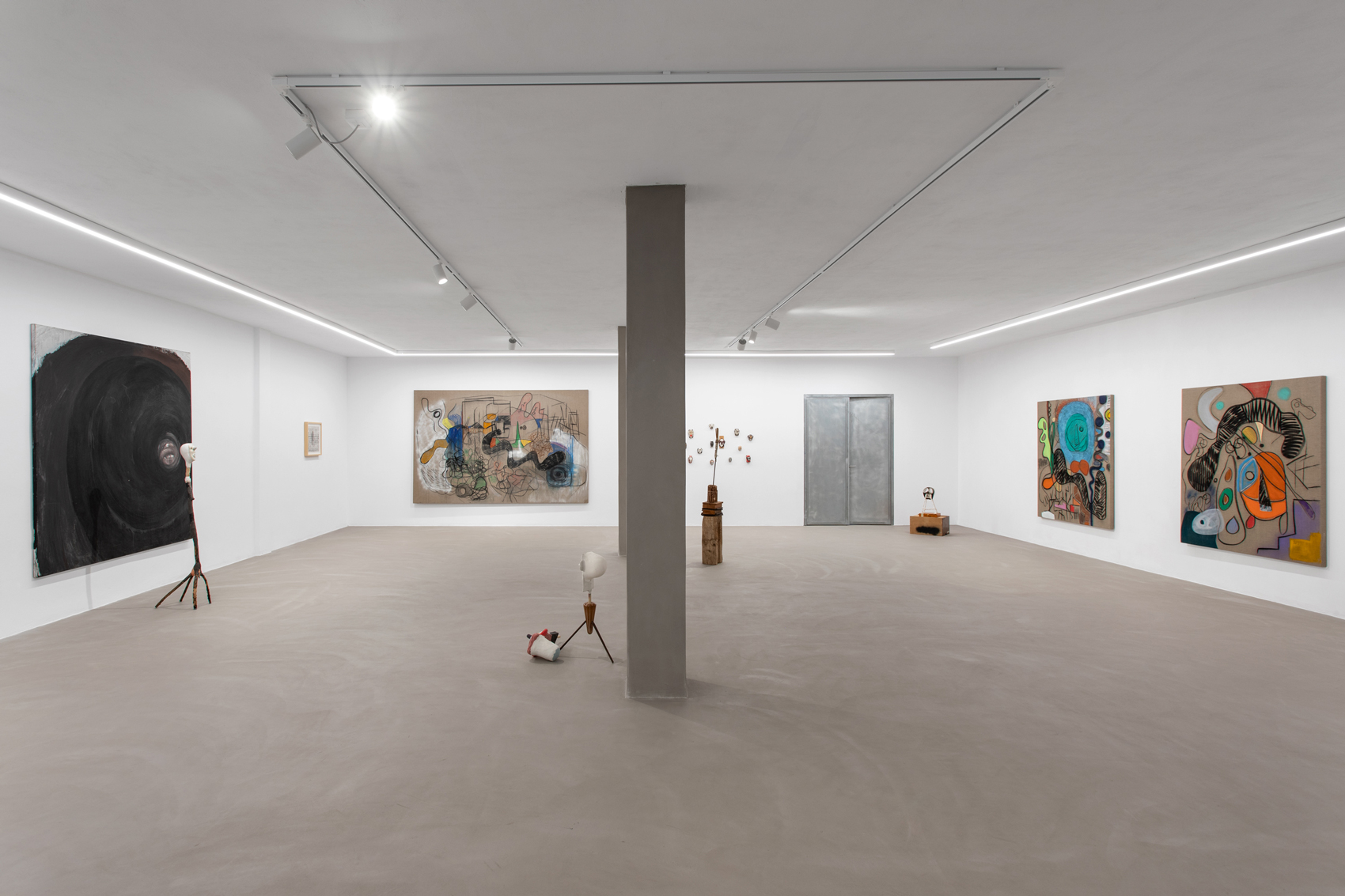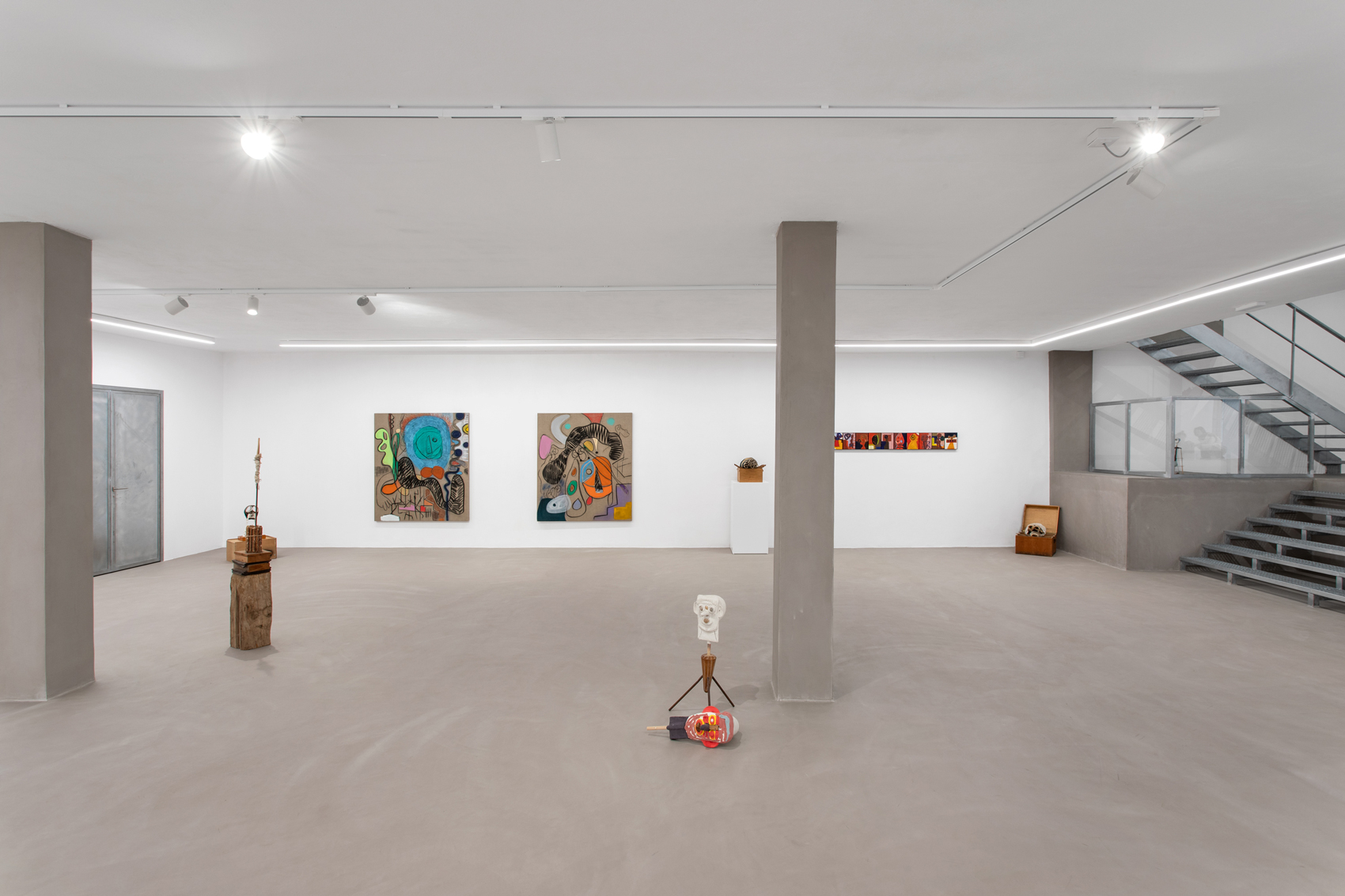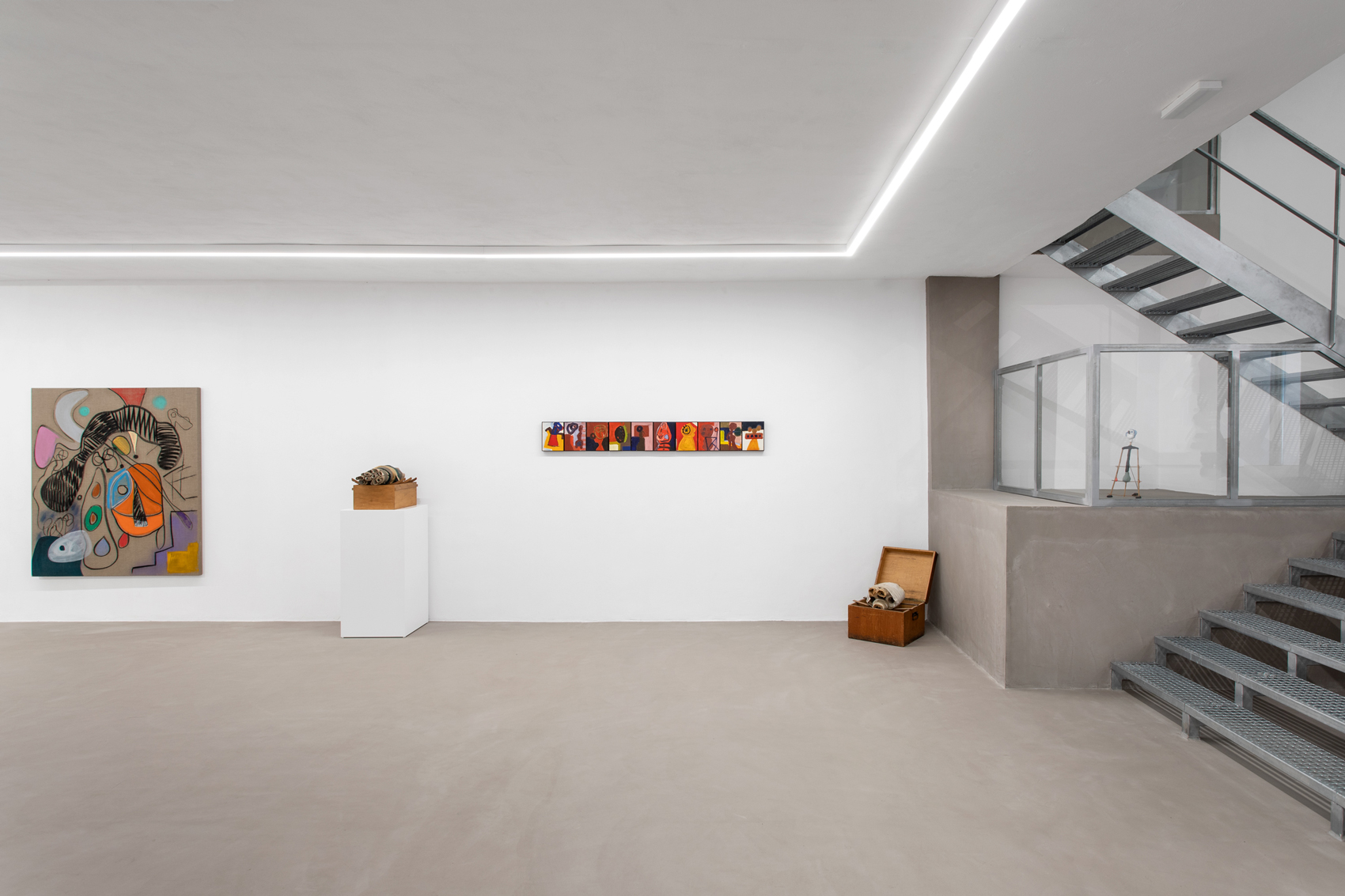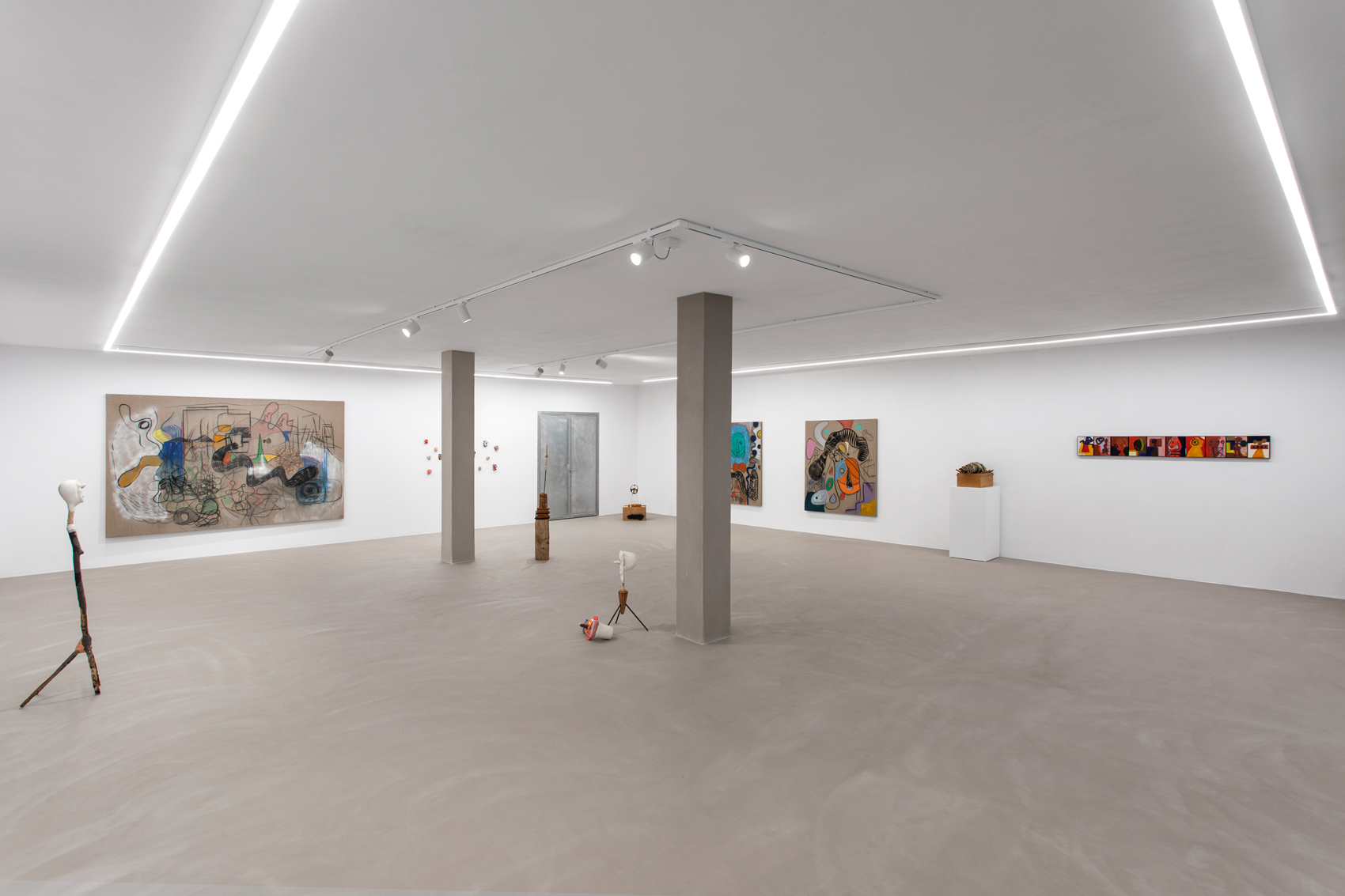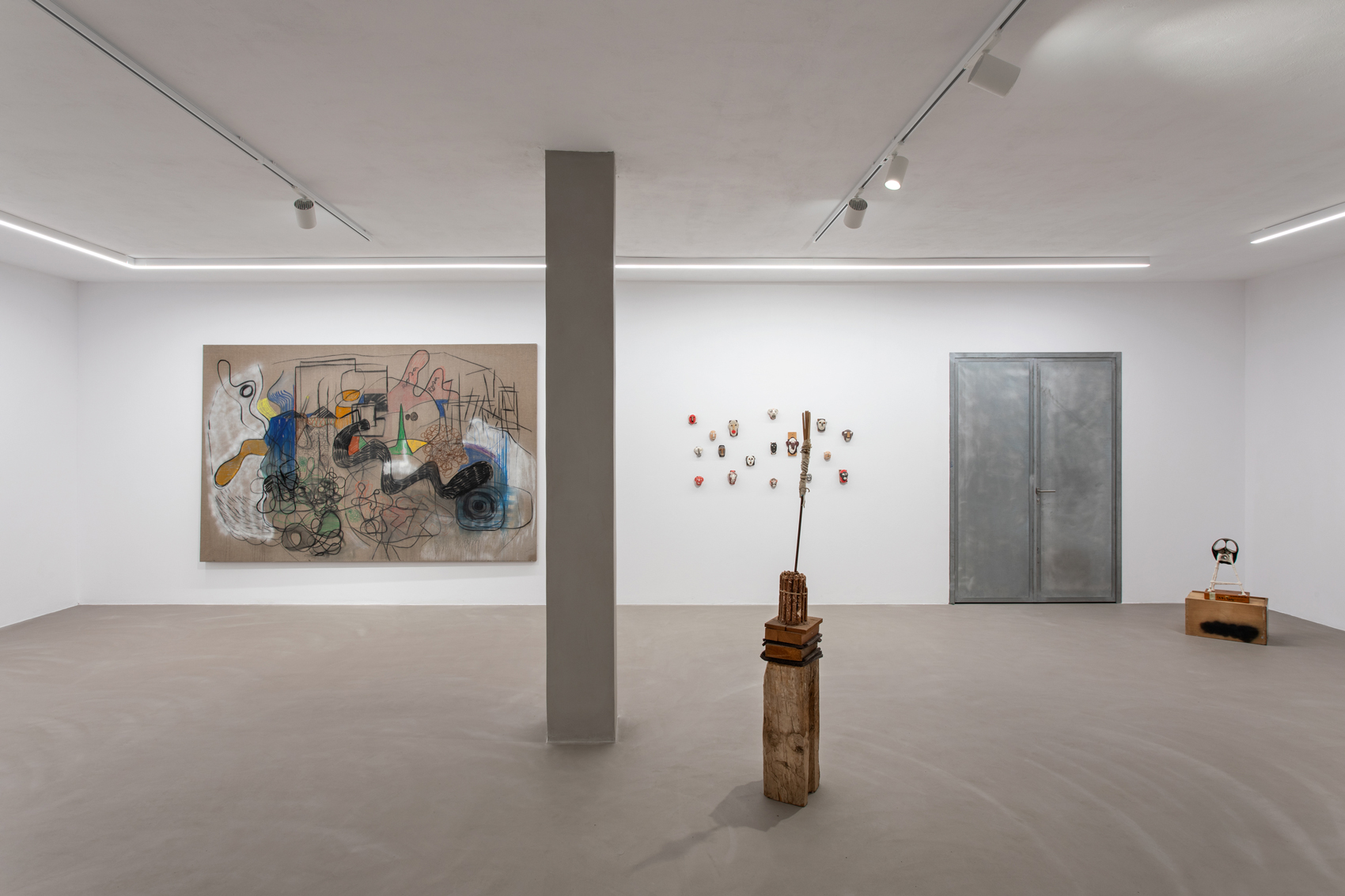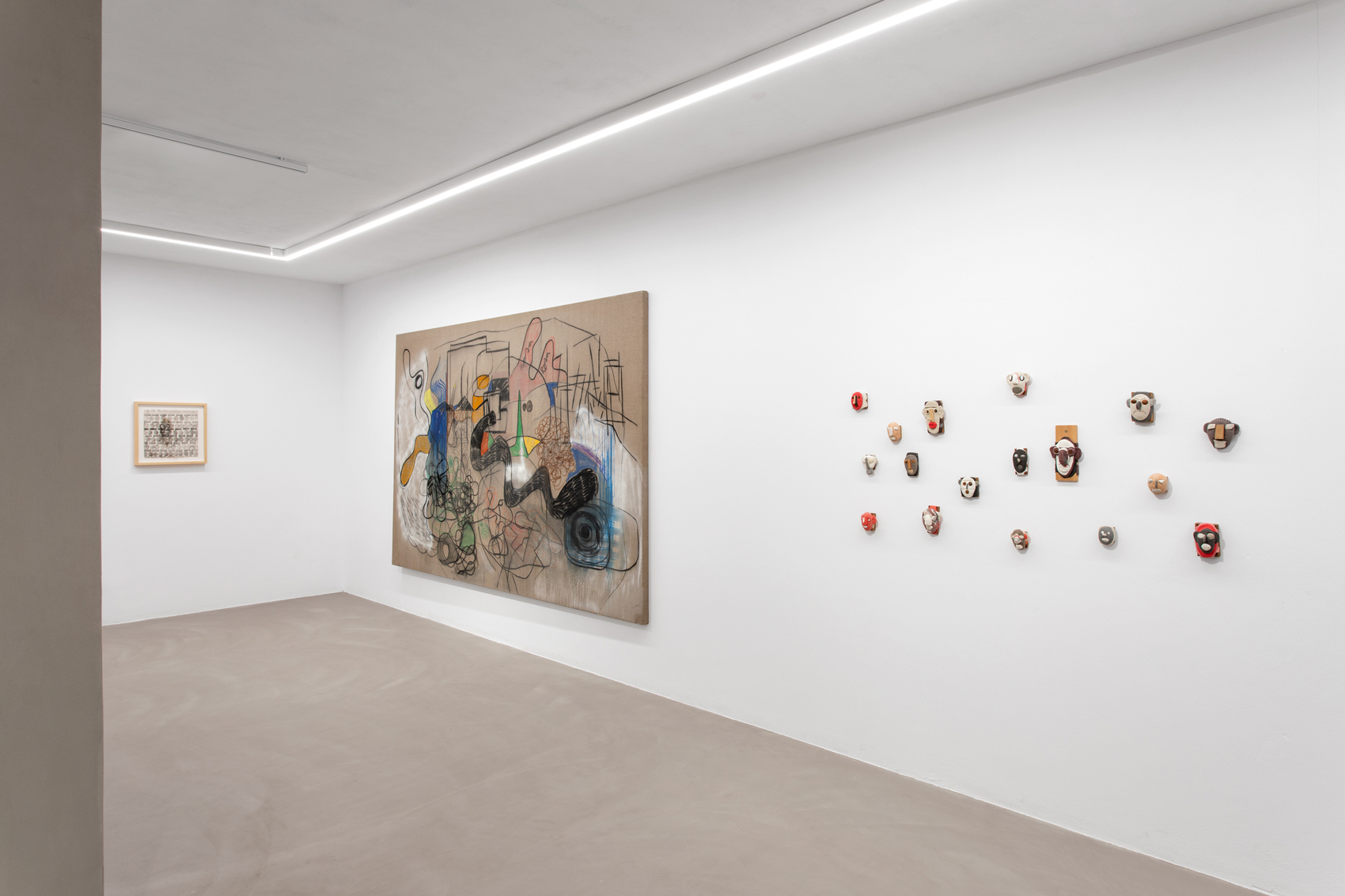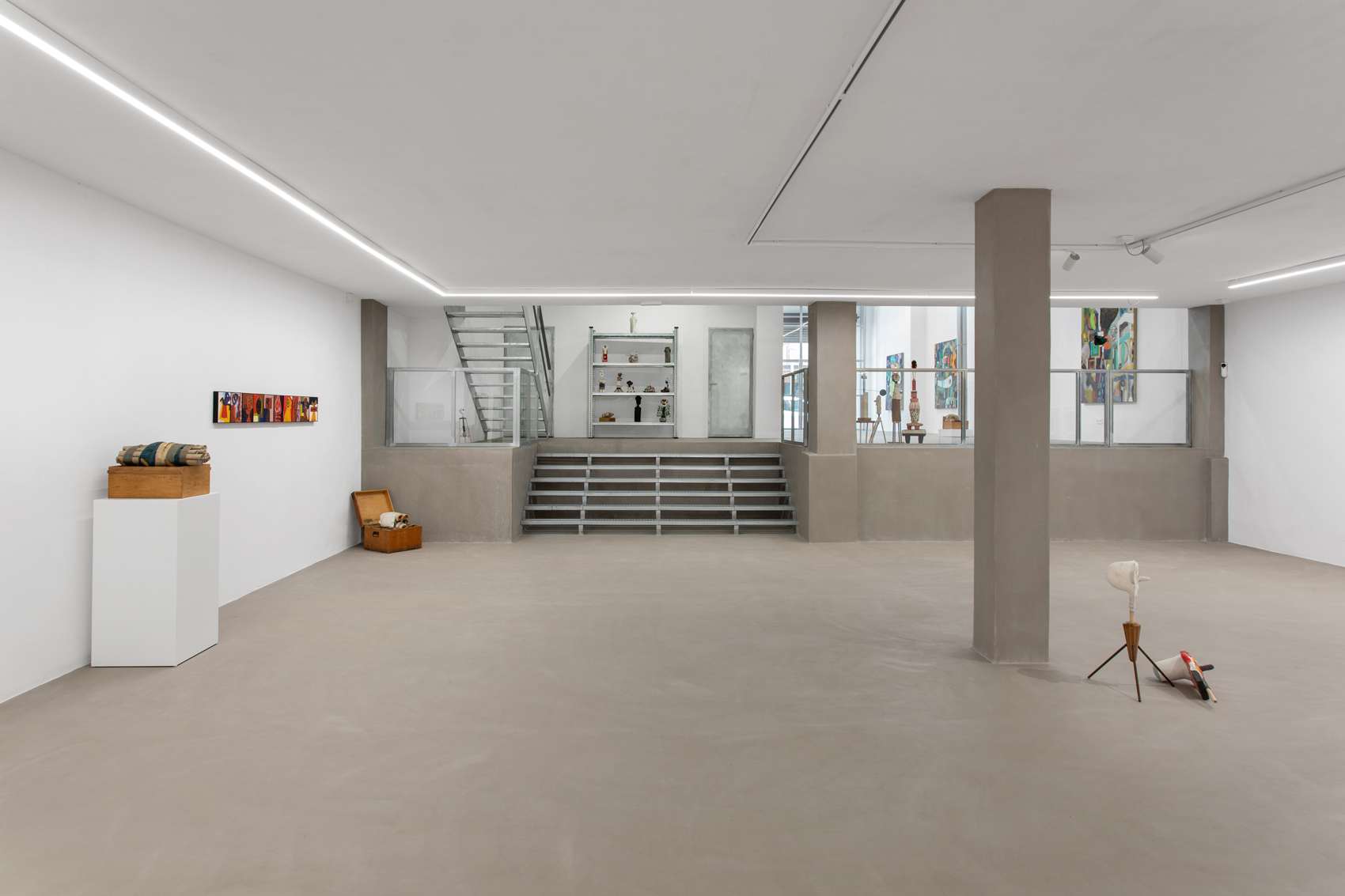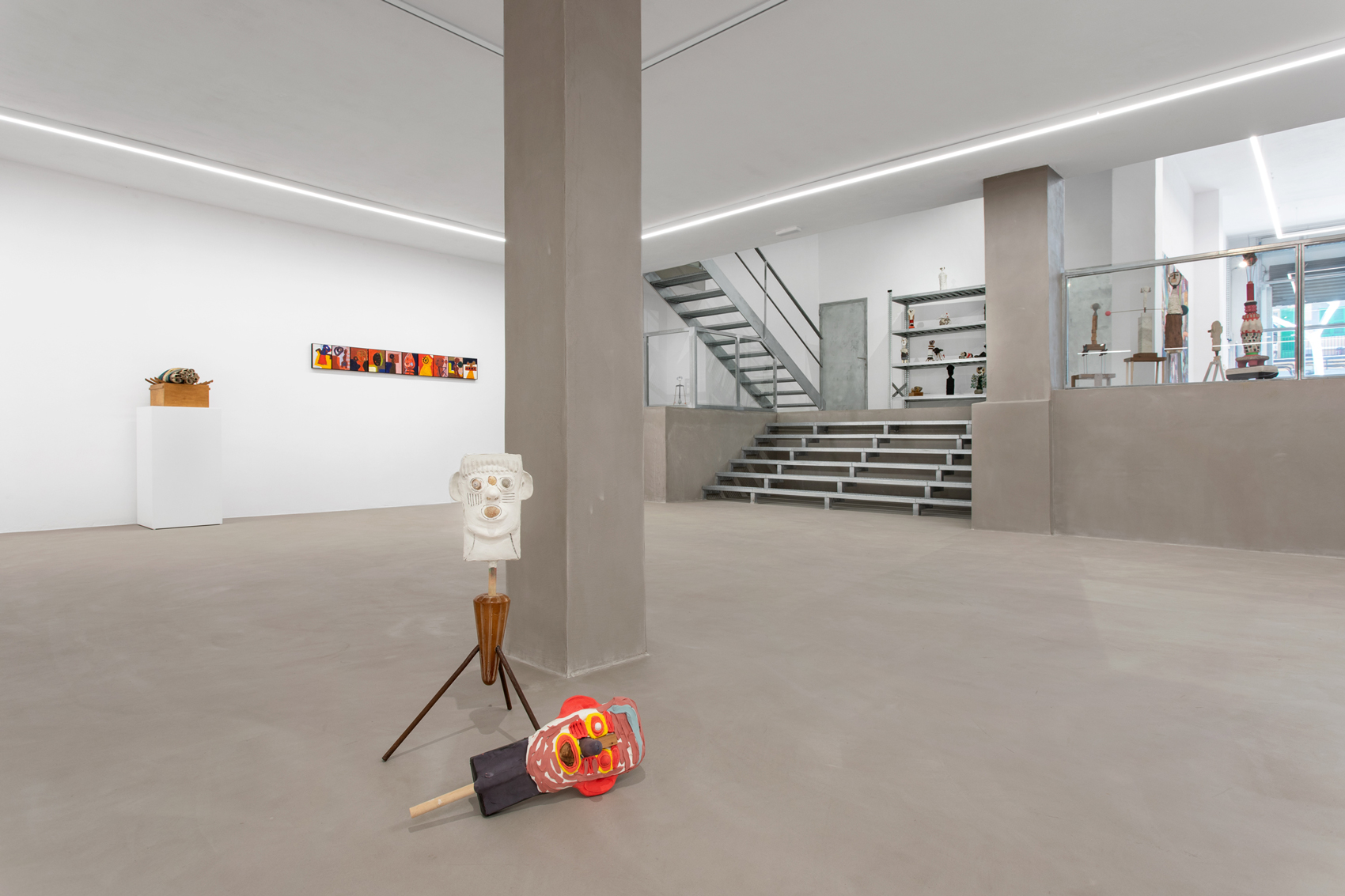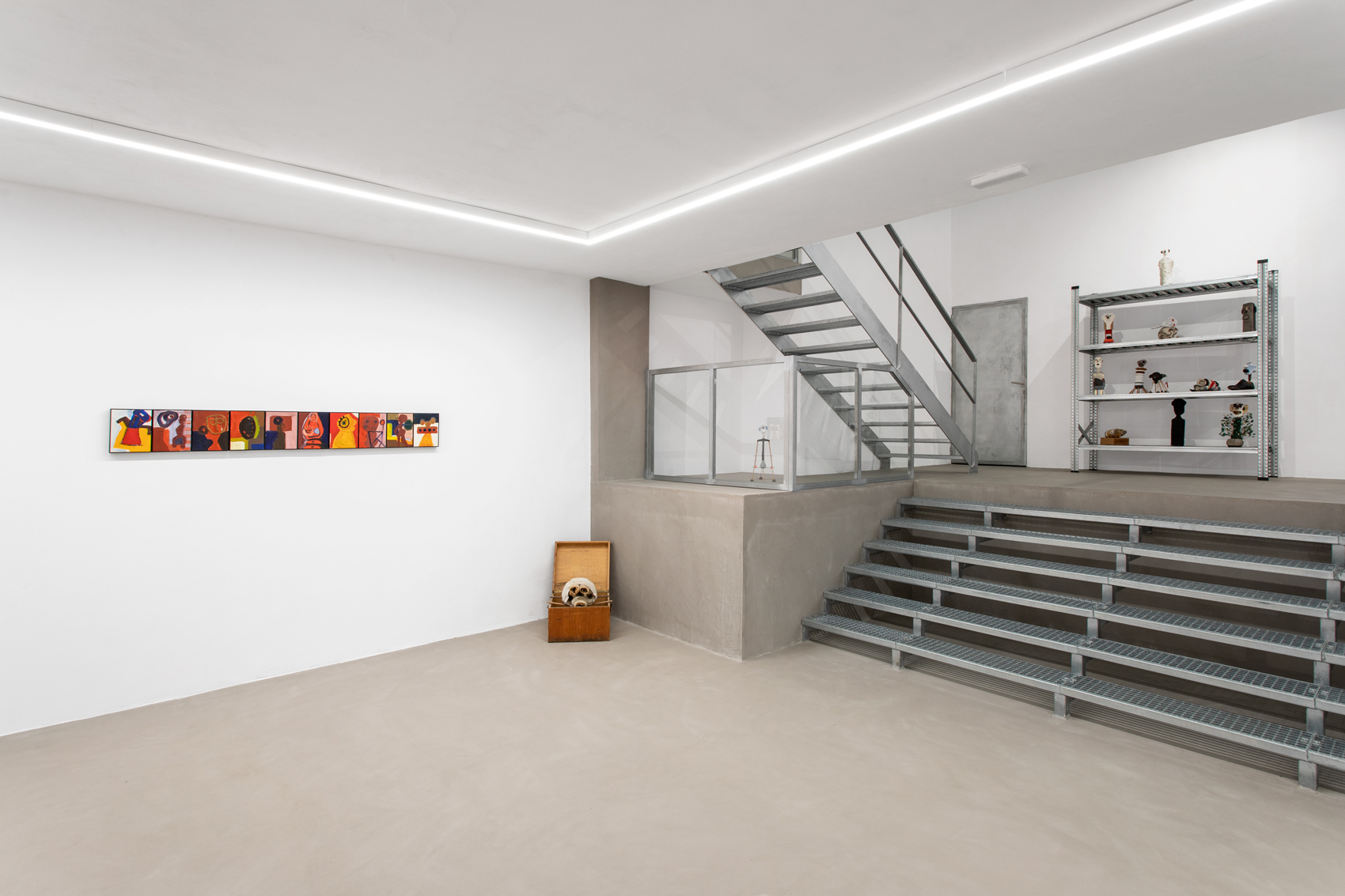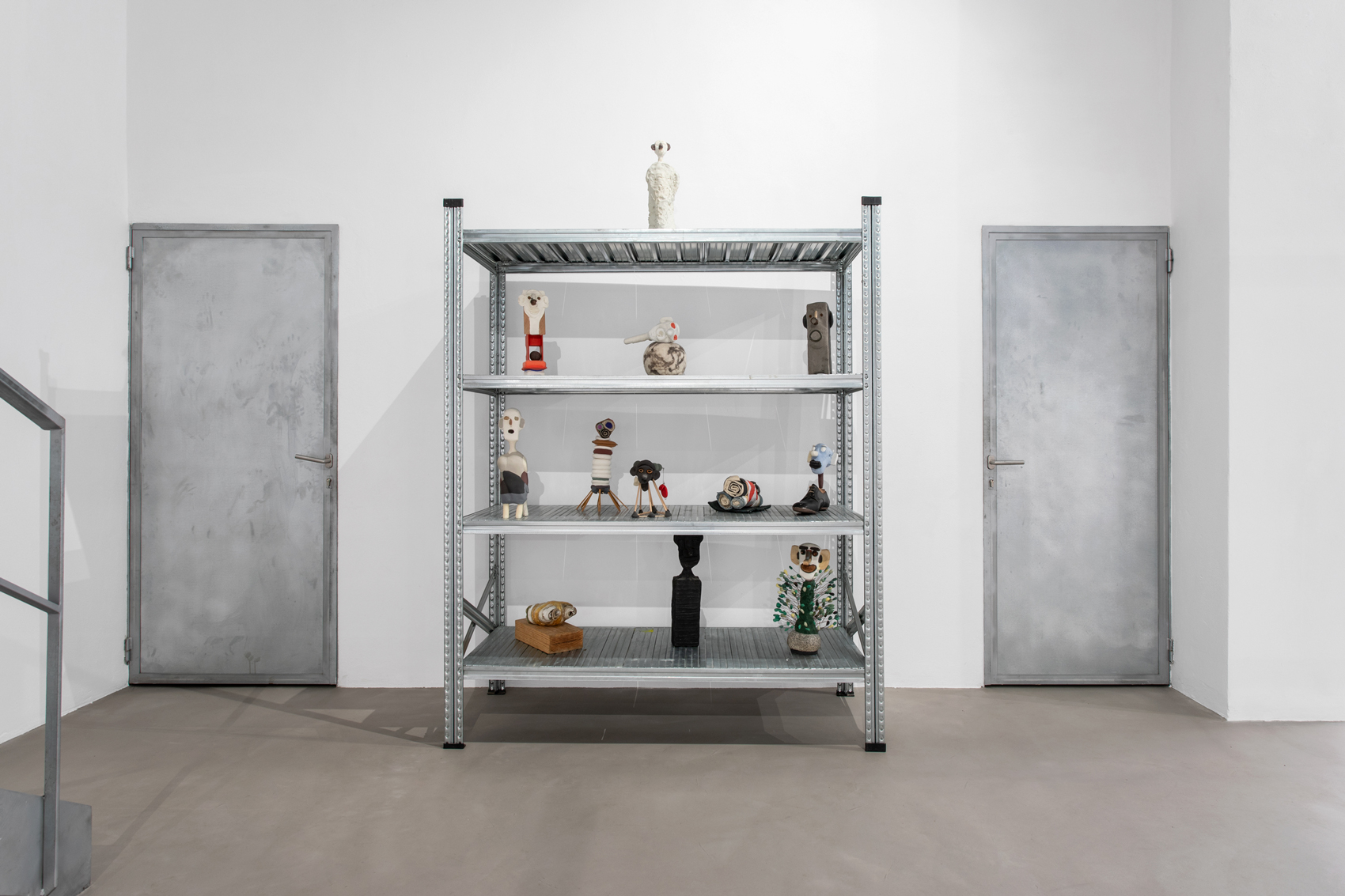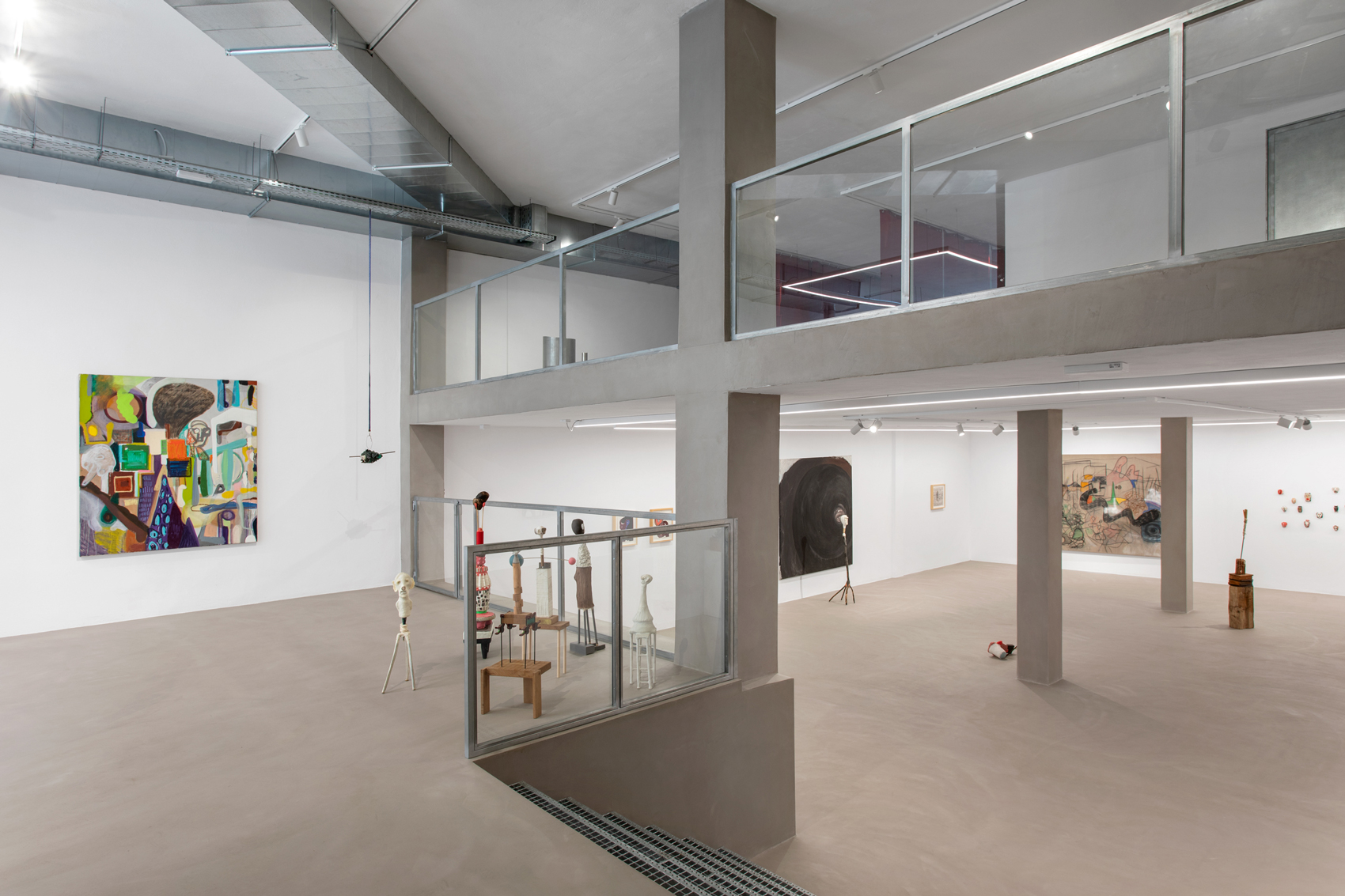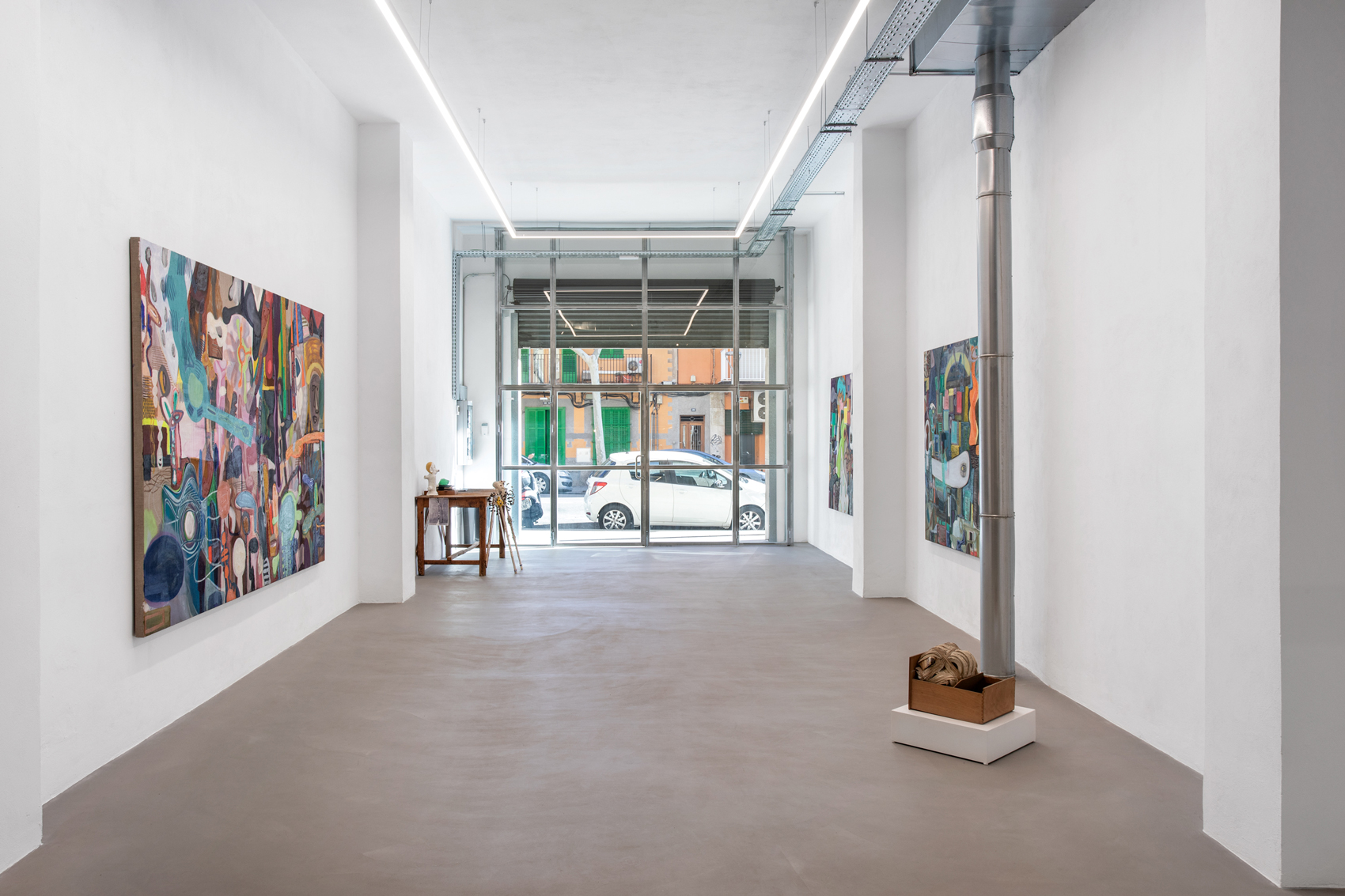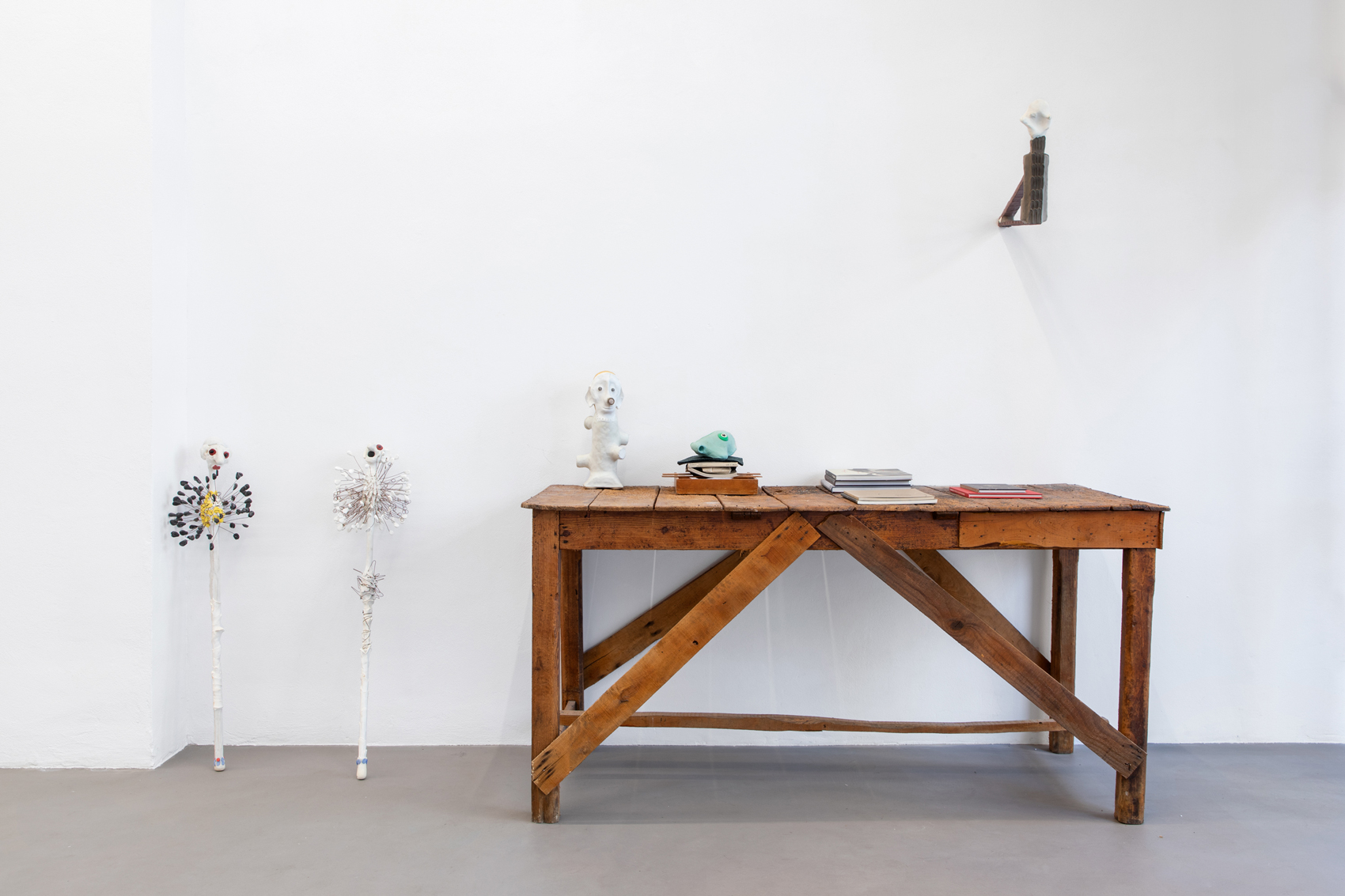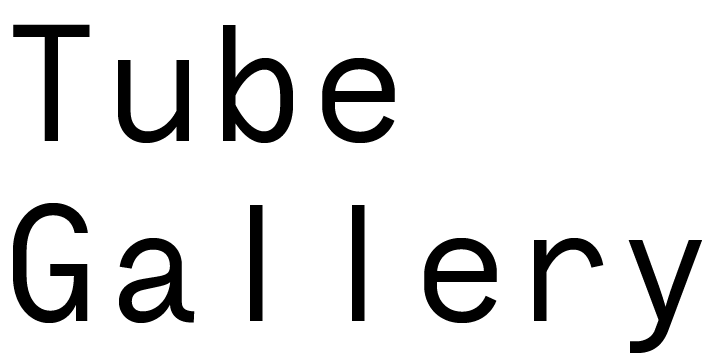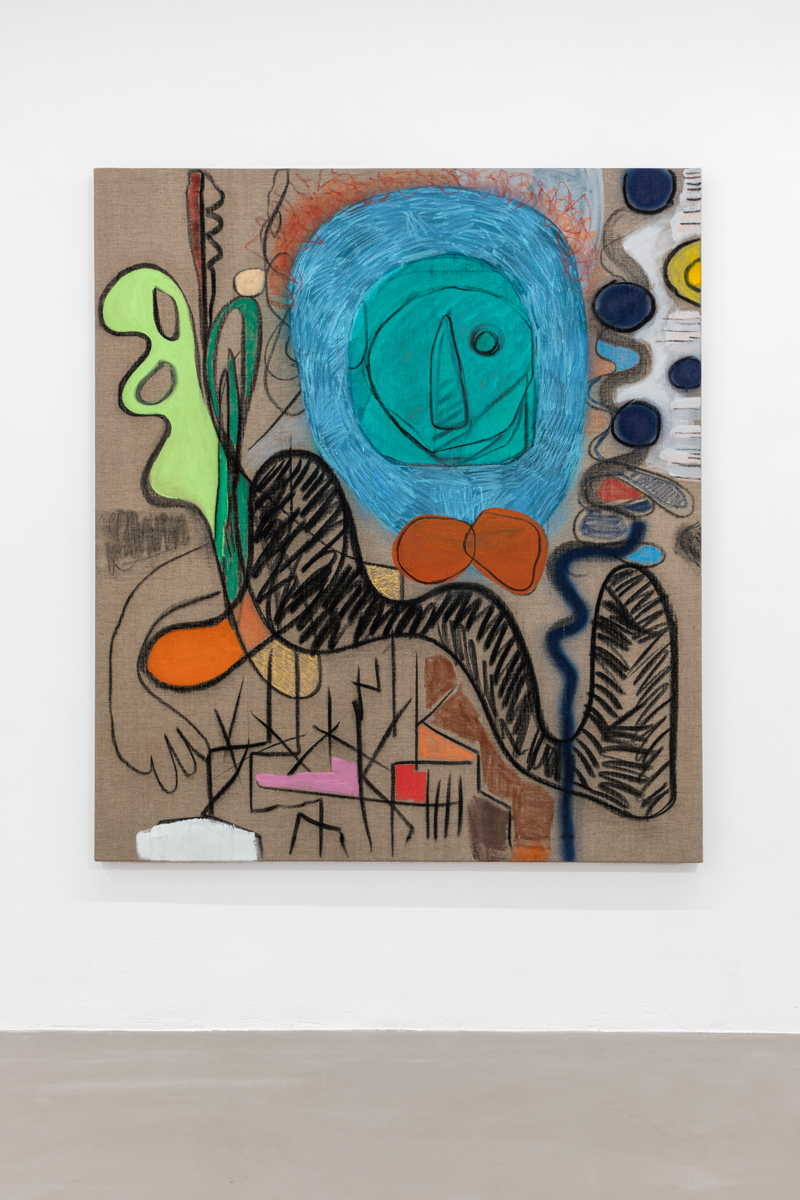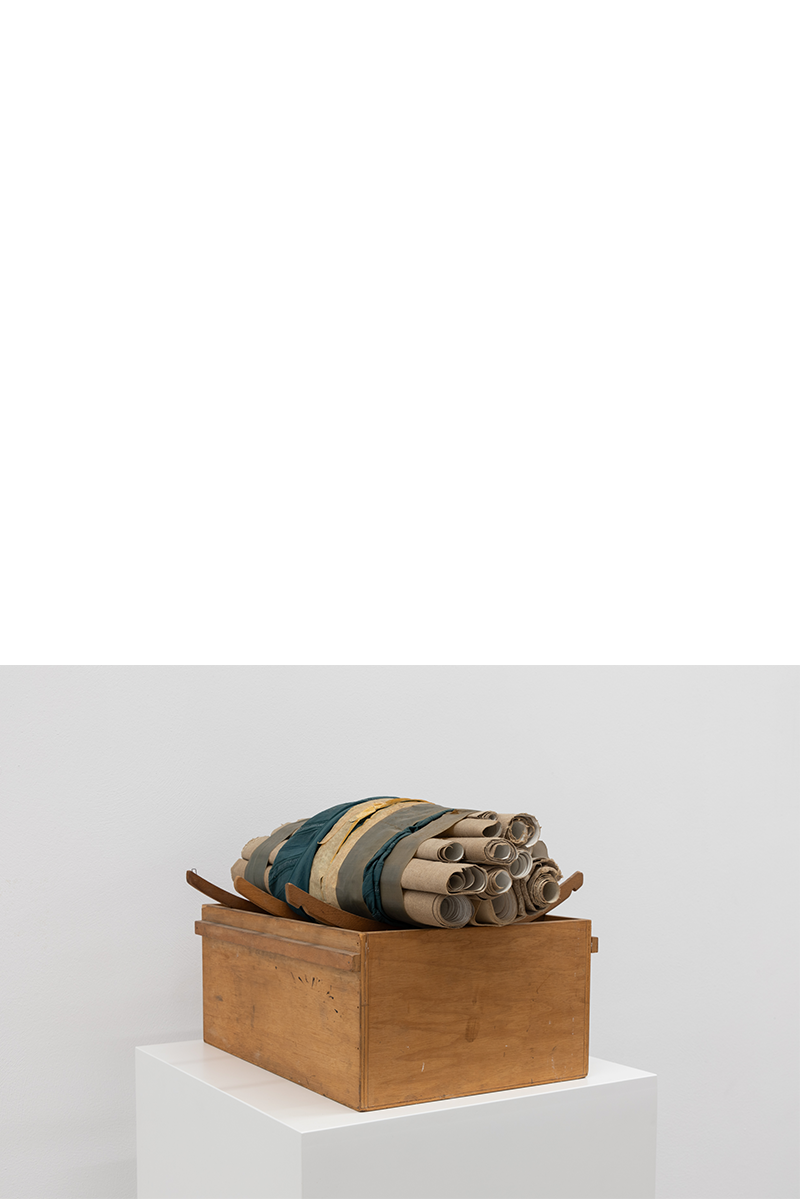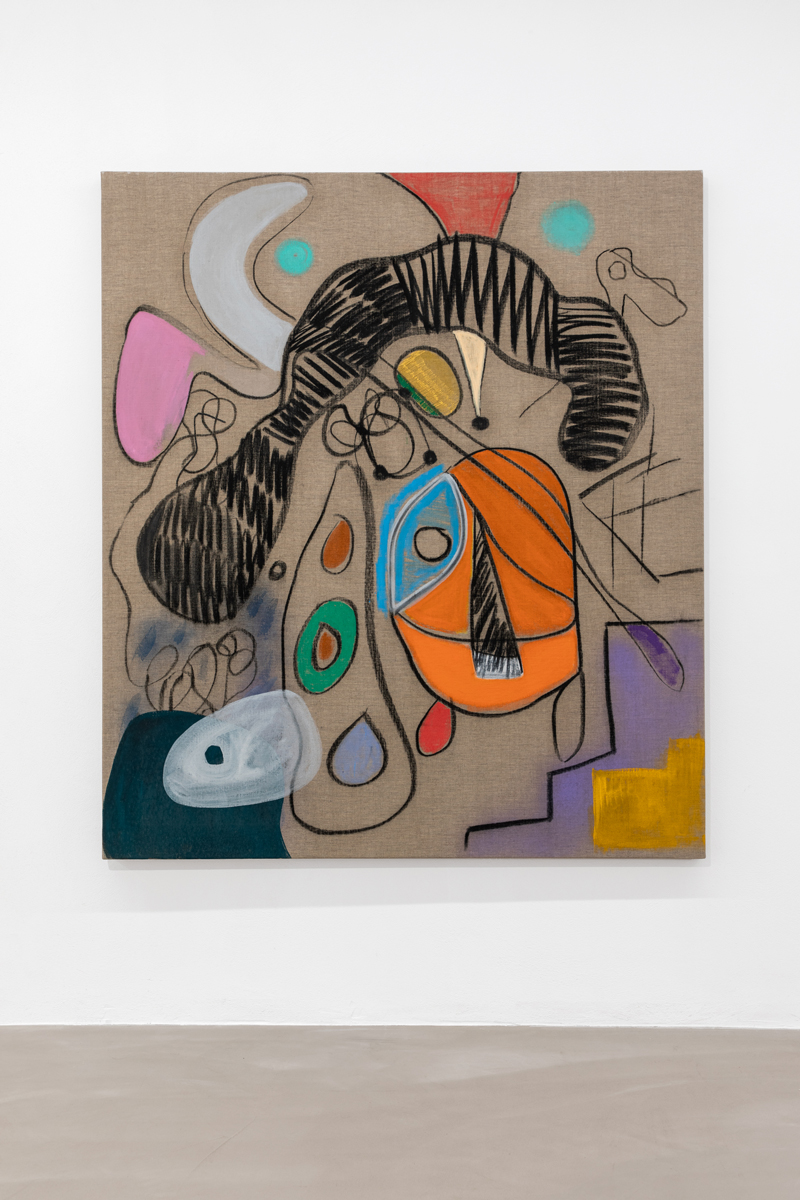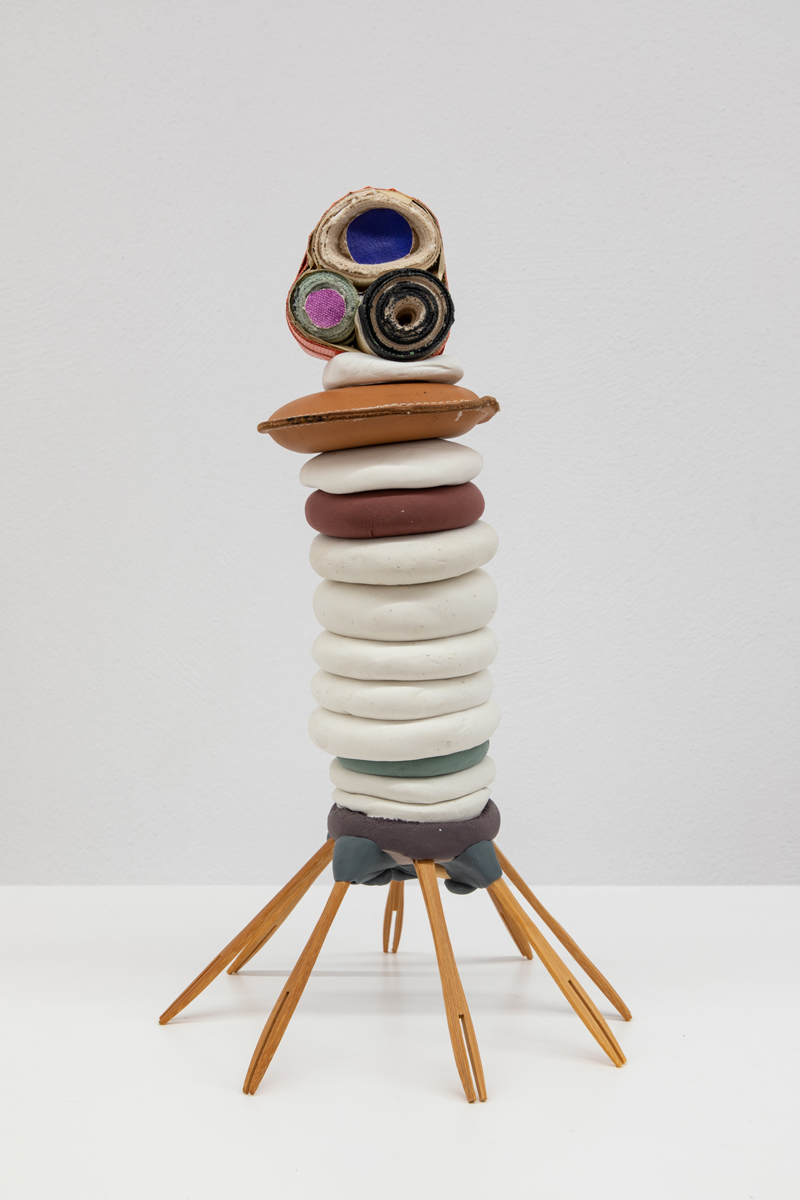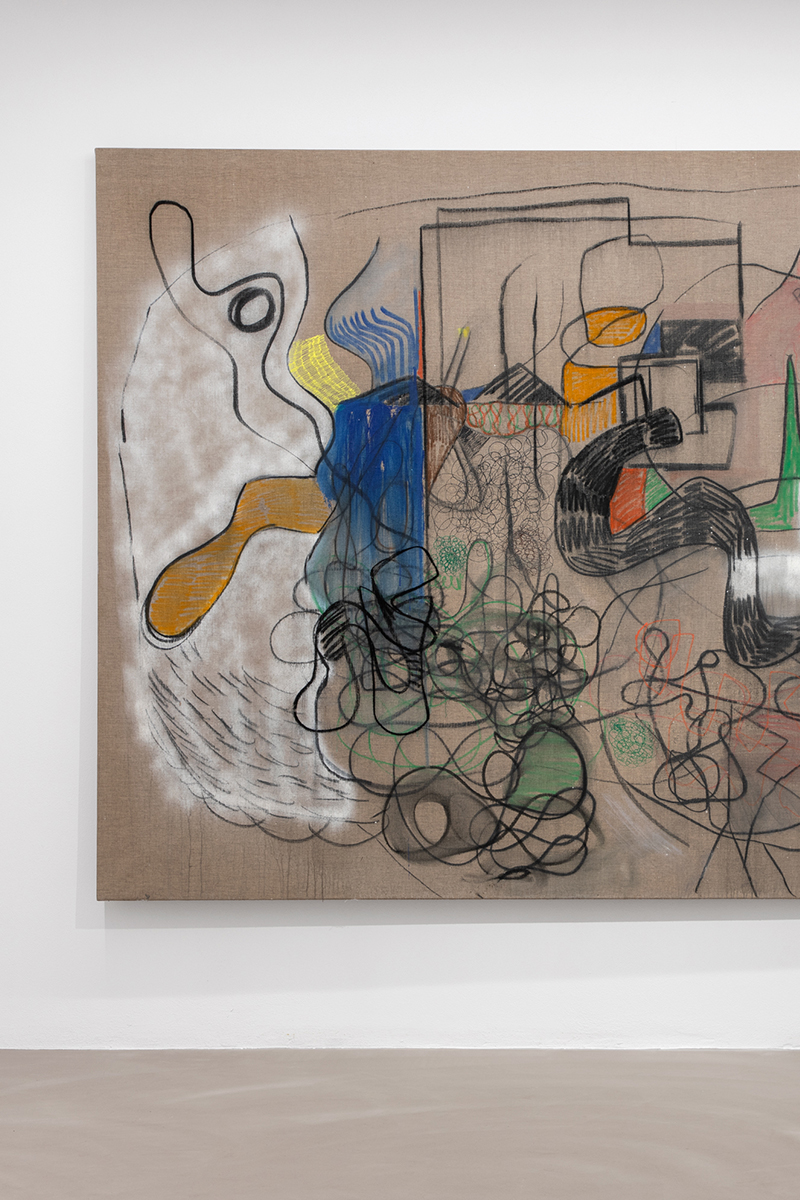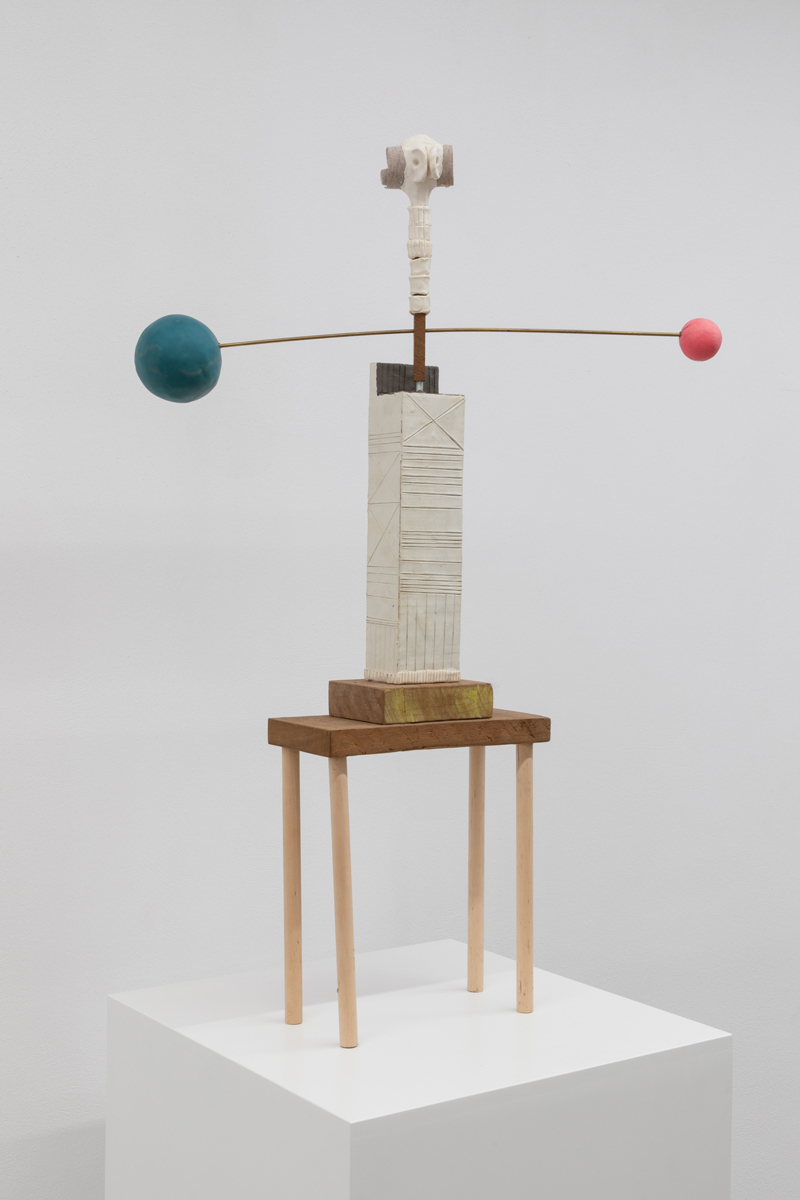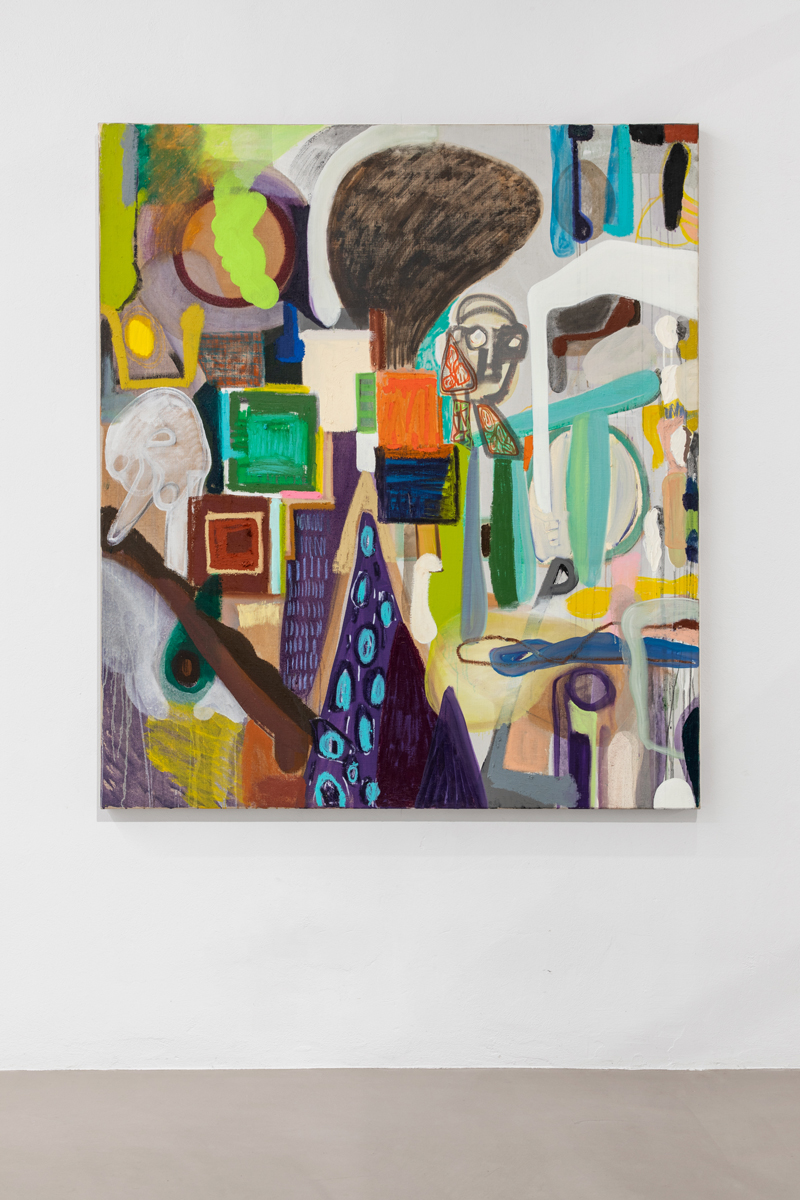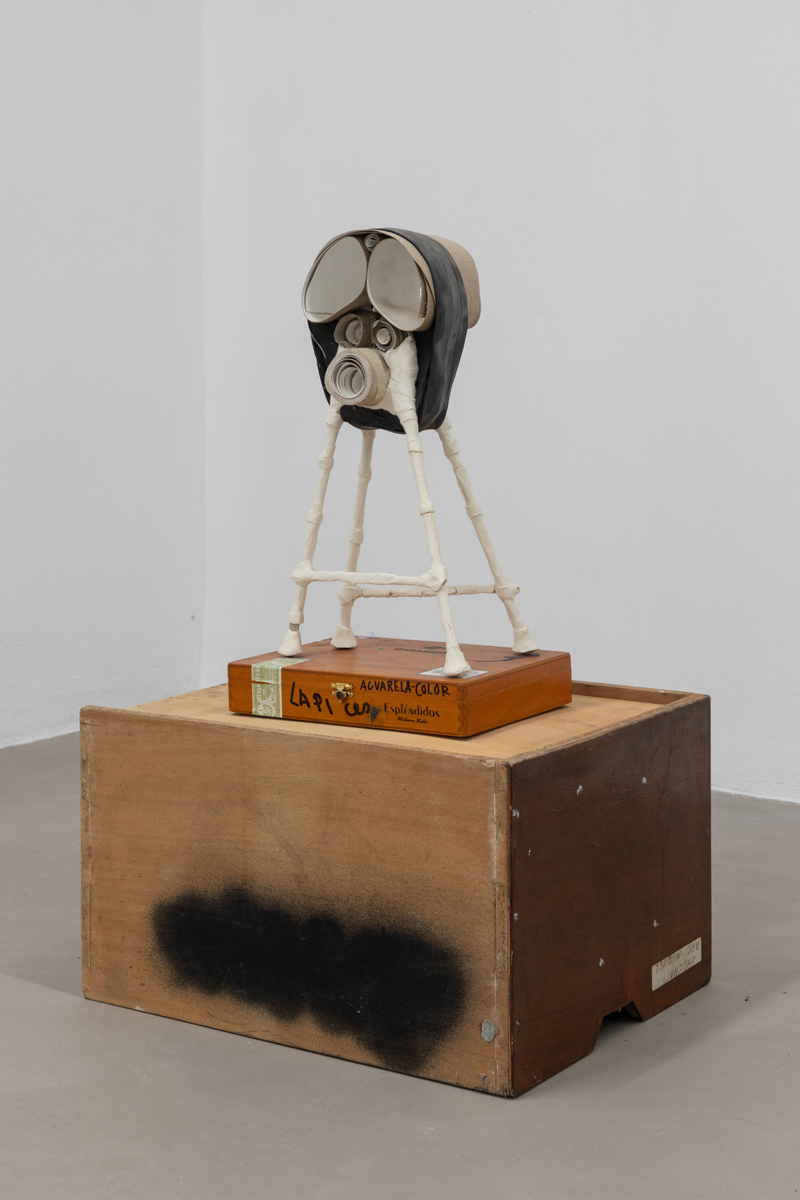His first exhibition at Tube Gallery is titled “Rafa Forteza: Etymologies” and is organized on two levels, starting with his most recent paintings. From there, it proposes a reverse journey through his sculptures and drawings, until reaching some works from the nineties that have survived in his studio over time. In this way, it suggests a return to the origin to then retrace the path taken.
I. Beginnings and Endings
The studio of Rafa Forteza (1955, Mallorca) was the first one I visited a few days after my arrival on the island. A lot of time has passed since that first visit in Alaró, but in subsequent visits, one has the feeling that nothing has changed. Everything has moved around, that’s for sure. The dance of the pieces in progress is an intrinsic part of the work of this tireless creator. His practice, like life itself, is cyclical. There are places within it that he inhabits for a time: like the slight comfort of a human face, only to then leave and start over again… In this process, he moves skillfully from one place to another, closing successive cycles with the same ease and detachment with which he moves between disciplines. His entire production is a continuous displacement between painting, sculpture, and drawing, but also words, which are essential in his practice and thought. They appear with poetic force on the back of his paintings and in the pages of his notebooks, where they are twisted like another material to create etymologies loaded with new meanings.
His first exhibition at Tube Gallery is titled “Rafa Forteza: Etymologies” and is organized on two levels, starting with his most recent pictorial works. From there, it proposes a reverse journey through his sculptures and drawings, ending with some works from the 1990s that have survived the passage of time in his studio. In this way, it suggests a return to the origin, only to retrace the path taken.
II. Etymological Origins
As a discipline, etymology is the study of the origin of words, but also of their changes in form and meaning over time. In this sense, the exhibition proposes an etymological analysis of Rafa Forteza’s work, paying attention to the evolution of his language over thirty years. But how does one trace the path to the origin of a particular artistic practice?
I met the artist under rather particular circumstances, while transcribing a long conversation that a mutual friend had recorded. While transcribing, one often pauses the conversation, retrieves the meaning of the words, pays attention to pauses, rhythms, and the tone of the voice, and questions the experience behind the concepts… The same happens when observing his paintings: in them, you can appreciate pauses, changes in rhythm, and the duration of the strokes. Sounds are replaced by colors, and words by shapes. They are joyful, vibrant, curved, changing, always fluid. Perhaps the origin of a particular artistic practice is nothing more than the invention of a problem.
Upon entering the gallery, we are greeted by two scepters that the visitor can hold while touring the exhibition. These portable sculptures dialogue with the rest of the works, generating new readings of them. For example, they find resonances with the recent paintings that occupy the first room. This is a series of paintings on linen where the color green acts as a guiding thread, as does the face, which sometimes emerges among lines and other times among color stains. The large format serves as a visual dictionary that is constantly being written. The sculpture “The Angel” (1991) hangs from the gallery ceiling and is shaped by a recurring gesture in the artist’s work: wrapping. Revisiting objects under a new light, in circumstantial meetings, encounters, and juxtapositions. Sometimes, not only the materials but also the sculptures themselves are grouped in such meetings, thus remaining open to future reinterpretations. The shelf is a meeting place where different sculptures are stored to coexist for a moment, through different eras and materials, from fabrics wrapped in adhesive tape to the head that calmly rests on a felt sphere, including the one that finds its balance in a shoe. The presence of wood and linen guides us through the lower floor. From fabric rolled into sculptures that remain absolutely contemporary to fabric as a pictorial surface, the material undergoes successive changes of form and meaning. These new paintings are a sort of visual synthesis of his plastic language, in which color gradually gives way to a line drawn in charcoal. A line that eventually turns into a word and language. And so, little by little, the verbs that underlie his practice appear: contain, wrap, store, gather, preserve, assemble, circulate… The presence of the circle becomes evident in the painting “Primary Introspections” (1991) and the work on paper, reaching black and thus completing the tour of the exhibition.
As we retrace our steps, it becomes clear that if there is something definitive in Rafa Forteza’s work, it is the sense of circularity and the experience of the cyclical, both on a formal and conceptual level. In the first, there is an exploration that gives rise to different disciplines: the circumference is identified with the line of the drawing, the circle with the stain of the painting, and the sphere with the volume of his sculptures. This experience of the cyclical is what makes a sculpture produced more than twenty years ago coexist with a recent painting. Rafa wraps different materials using fabrics, draws the contours of a face, and finds the circle over and over again while painting on canvas. Meanwhile, he writes syllables here and there, breaks them apart, and joins them back together. Beginnings and endings meet, and the arrow of time that traverses the creative process is revealed to be part of a cyclical journey.
III. Circles and Returns
Throughout this journey, the exhibition showcases a profusion of lines of investigation, changing forms, and meanings over thirty years of inexhaustible production. This exploration of form and the tireless search for meaning continues, like a joyful dance that moves things around, plays with words, and moves in cycles and repetitions. Nietzsche claimed that there was no thought without dance, and possibly, without it, there would be no artistic creation either. It is well known that the German philosopher was classically trained as a philologist and possessed extensive knowledge of language and the origin of Greek words. In one of his most famous works, he proposed the idea of the eternal return to illustrate the great affirmation underlying his vitalist philosophy. Suppose a demon were to tell us: “this life, as you have lived and are living it, you will have to live again, countless times; and there will be nothing new in it, but every pain and every pleasure and every thought and sigh and everything indescribably small and great in your life will come to you again (…)” Deep down, I believe that Rafa is already speaking with that demon, and it is for this reason that he always says yes to one more day of work in the studio.
-Esmeralda Gómez Galera.
